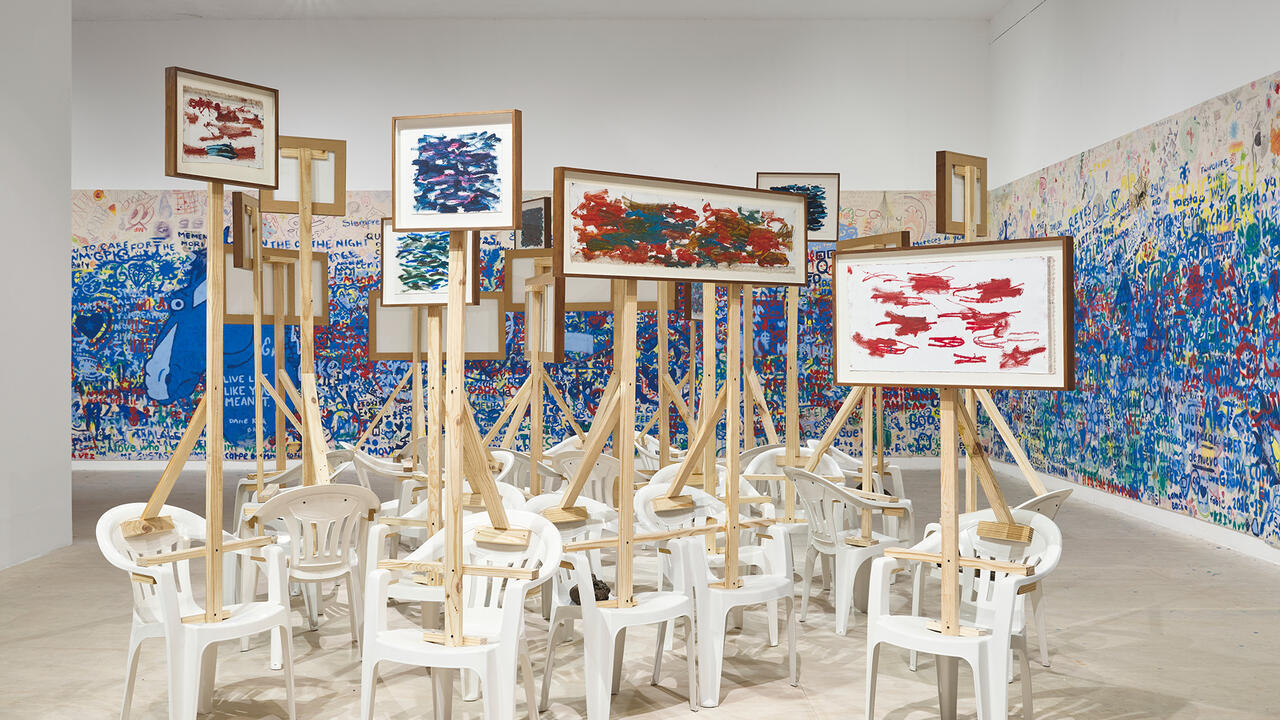Brian Jungen
Bonner Kunstverein
Bonner Kunstverein

Brian Jungen’s objects thrive on paradox. In 2007 the Canadian artist built a series of columns out of golf bags made by the upmarket brand TaylorMade. He stacked the individual bags with their side pockets puffed out to resemble grimacing faces, their zips and clasps opened. Although the nearly four-metre-tall columns were made of industrially produced materials, they were immediately recognizable as totems. Jungen used years as the titles of these works: 1960 was the year when the indigenous peoples of Canada were granted the right to vote; in 1980 the Dane-zaa tribe successfully blocked the expansion of a golf course onto their territory. Through these titles, seemingly archaic monuments bespeak political events in more recent Canadian history.
Three of these columns are on display at the impressive exhibition of Jungen’s work at the Bonner Kunstverein, alongside more recent works by the artist, who is a member of the Dane-zaa tribe. Although Jungen’s objects do not always refer directly to concrete events, two worlds continually collide in them: ritual objects, such as totems and drums, encounter the insignia of modern consumer society. In his series Five Year Universe (2011), he printed stretched elk hides – normally the material used to make traditional drums – on black foamboard, a typically disposable product. The result looks like abstract painting. For Mother Tongue (2013), he worked in the opposite direction, wrapping the fender of a Volkswagen car in a red deer hide. Jungen deftly perforated the edges of the hide, ran thread through them, and stitched them together as if to make a drum. The resulting work inspires cultic reminiscences while also drawing on the contemporary artistic strategies of the readymade. This already-hybrid object is displayed with a chest freezer as its pedestal – a reference to the special hunting rights of Canada’s indigenous peoples, who store hunted game in such freezers.
‘What I’m interested in’, Jungen has written previously, ‘is the creation and transformation of relationships between the material and the subject, whose apparent polarity is perhaps not so conflicting after all.’ Accordingly, Jungen brings together seemingly contradictory objects, joining nature with culture, craftsmanship with mass production. The small objects of Thunderbirds (2006) offer a perfect example of this paradoxical approach to the materiality and magic of objects. In this work, Jungen has attached white feathers to the rear-view mirrors of the iconic vintage Ford Thunderbird as good luck charms. ‘Thunderbird’ is the name of the mythological bird venerated in many North American indigenous cultures; the feathers in Jungen’s work are made of white plastic bottles, completing the circle: the fetishized car is confronted with its mythological counterpart fashioned from the detritus of civilization. The Thunderbirds’ mirrors are pointed either at the sky or towards the viewer’s gaze. They thereby show us our own object fetishism and the power objects such as a car or an art work exert upon us – and whether this power is so different from the force typically ascribed to cultic objects.
Translated by Jane Yager
















